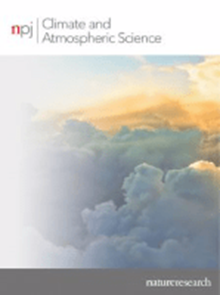Non-linear dynamical approaches for characterizing multi-sector climate impacts under irreducible uncertainty.
IF 8.4
1区 地球科学
Q1 METEOROLOGY & ATMOSPHERIC SCIENCES
引用次数: 0
Abstract
Internal climate variability (ICV) remains a major source of uncertainty in climate projections, complicating impact assessments across critical sectors, especially at stakeholder-relevant scales. Given that ICV emerges from the nonlinear interactions of the climate system, we argue that nonlinear dynamical (NLD) approaches can improve its characterization, providing physically interpretable insights that strengthen adaptation strategies and support multisector decision-making. However, despite their suitability for such problems, NLD approaches remain largely underutilized in the analysis of initial condition large ensembles (LEs). We argue that a diverse suite of NLD approaches offers a promising pathway for systematically extracting robust insights from LEs. If effectively applied and systematically integrated, these methods could fully harness the potential of LEs, uncovering underlying patterns and variability across ensemble members to refine fundamental insights from climate projections. This will help bridge the gap between complex climate dynamics and practical resilience strategies, ensuring that decision-makers, resource managers, and infrastructure planners have a more reliable foundation for navigating irreducible uncertainty.不可约不确定性下多部门气候影响的非线性动力学表征方法。
内部气候变率(ICV)仍然是气候预测不确定性的主要来源,使关键部门的影响评估复杂化,特别是在利益相关者相关的尺度上。鉴于ICV是由气候系统的非线性相互作用产生的,我们认为非线性动力学(NLD)方法可以改善其表征,提供物理上可解释的见解,从而加强适应策略并支持多部门决策。然而,尽管NLD方法适合于这些问题,但在初始条件大集合(LEs)的分析中,NLD方法在很大程度上仍未得到充分利用。我们认为,一套多样化的NLD方法为系统地从LEs中提取稳健的见解提供了一条有希望的途径。如果有效应用和系统整合,这些方法可以充分利用LEs的潜力,揭示集合成员之间的潜在模式和变异性,从而从气候预测中提炼基本见解。这将有助于弥合复杂的气候动力学和实际的复原力战略之间的差距,确保决策者、资源管理者和基础设施规划者在应对不可减少的不确定性方面拥有更可靠的基础。
本文章由计算机程序翻译,如有差异,请以英文原文为准。
求助全文
约1分钟内获得全文
求助全文
来源期刊

npj Climate and Atmospheric Science
Earth and Planetary Sciences-Atmospheric Science
CiteScore
8.80
自引率
3.30%
发文量
87
审稿时长
21 weeks
期刊介绍:
npj Climate and Atmospheric Science is an open-access journal encompassing the relevant physical, chemical, and biological aspects of atmospheric and climate science. The journal places particular emphasis on regional studies that unveil new insights into specific localities, including examinations of local atmospheric composition, such as aerosols.
The range of topics covered by the journal includes climate dynamics, climate variability, weather and climate prediction, climate change, ocean dynamics, weather extremes, air pollution, atmospheric chemistry (including aerosols), the hydrological cycle, and atmosphere–ocean and atmosphere–land interactions. The journal welcomes studies employing a diverse array of methods, including numerical and statistical modeling, the development and application of in situ observational techniques, remote sensing, and the development or evaluation of new reanalyses.
 求助内容:
求助内容: 应助结果提醒方式:
应助结果提醒方式:


